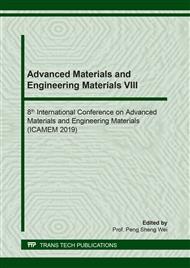p.182
p.190
p.196
p.203
p.211
p.217
p.224
p.229
p.233
Formation of Feed-Direction Burr in Axial Vibration Drilling
Abstract:
Based on the fundamental theory of axial vibration drilling, the influence of vibration drilling on the feed-exit burr has been analyzed. The result shows that, due to axial vibration,vibration drilling has some unique characteristics, such as variable-thickness cutting and impulse cutting,which not only improve the chip-breaking conditions and working angle of the drill,but reduce the thrust force.Therefore, the plastic deformation of workpiece material and the exit burr are restrained and decreased effectively.
Info:
Periodical:
Pages:
211-216
Citation:
Online since:
July 2019
Authors:
Price:
Сopyright:
© 2019 Trans Tech Publications Ltd. All Rights Reserved
Share:
Citation:


